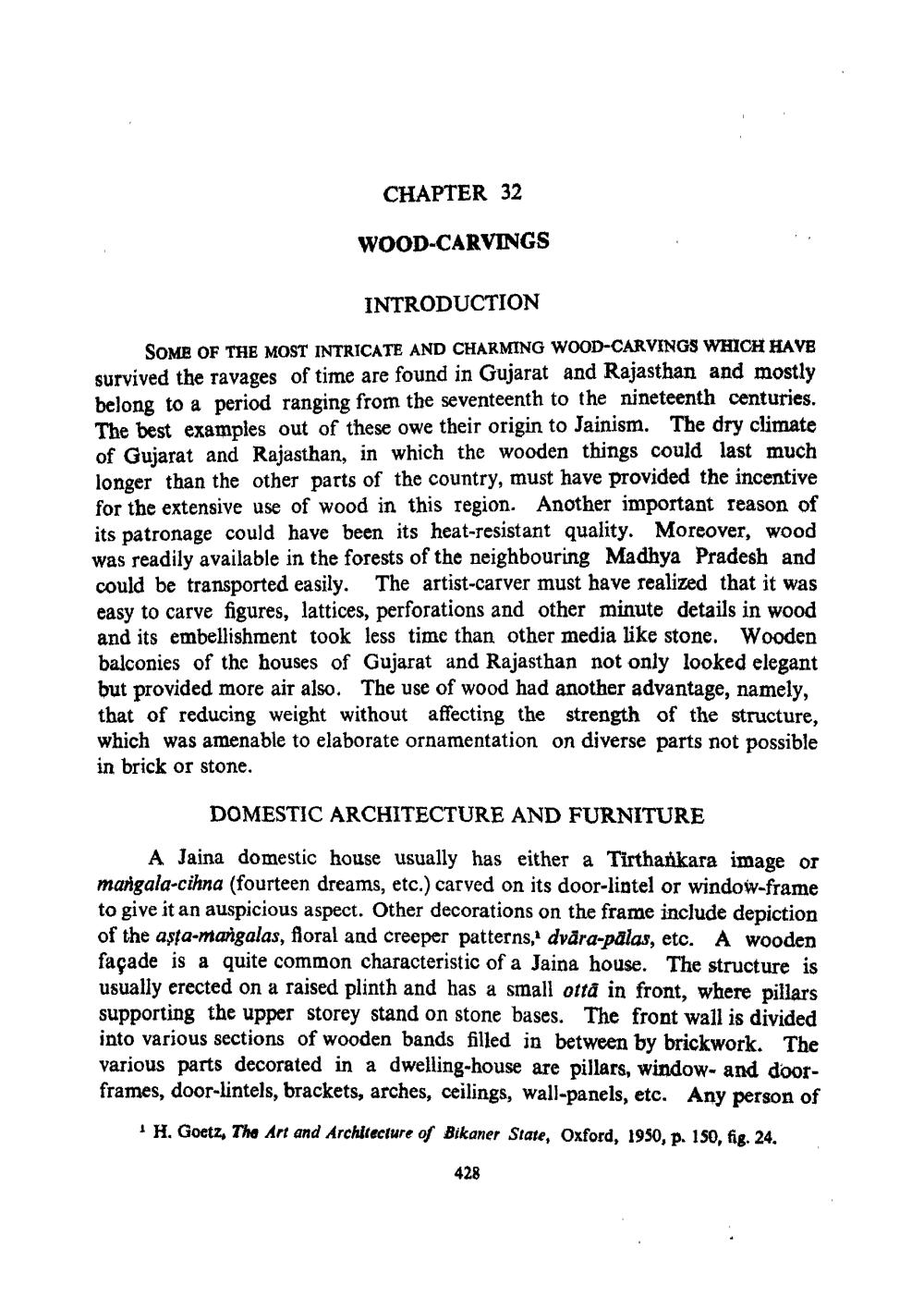________________
CHAPTER 32
WOOD-CARVINGS
INTRODUCTION
SOME OF THE MOST INTRICATE AND CHARMING WOOD-CARVINGS WHICH HAVE survived the ravages of time are found in Gujarat and Rajasthan and mostly belong to a period ranging from the seventeenth to the nineteenth centuries. The best examples out of these owe their origin to Jainism. The dry climate of Gujarat and Rajasthan, in which the wooden things could last much longer than the other parts of the country, must have provided the incentive for the extensive use of wood in this region. Another important reason of its patronage could have been its heat-resistant quality. Moreover, wood was readily available in the forests of the neighbouring Madhya Pradesh and could be transported easily. The artist-carver must have realized that it was easy to carve figures, lattices, perforations and other minute details in wood and its embellishment took less time than other media like stone. Wooden balconies of the houses of Gujarat and Rajasthan not only looked elegant but provided more air also. The use of wood had another advantage, namely, that of reducing weight without affecting the strength of the structure which was amenable to elaborate ornamentation on diverse parts not possible in brick or stone.
DOMESTIC ARCHITECTURE AND FURNITURE
A Jaina domestic house usually has either a Tirthankara image or mangala-cihna (fourteen dreams, etc.) carved on its door-lintel or window-frame to give it an auspicious aspect. Other decorations on the frame include depiction of the aşta-mangalas, floral and creeper patterns, dvåra-palas, etc. A wooden façade is a quite common characteristic of a Jaina house. The structure is usually erected on a raised plinth and has a small ottà in front, where pillars supporting the upper storey stand on stone bases. The front wall is divided into various sections of wooden bands filled in between by brickwork. The various parts decorated in a dwelling-house are pillars, window- and doorframes, door-lintels, brackets, arches, ceilings, wall-panels, etc. Any person of
H. Goetz, The Art and Architecture of Bikaner State, Oxford, 1950, p. 150, fig. 24.
428




